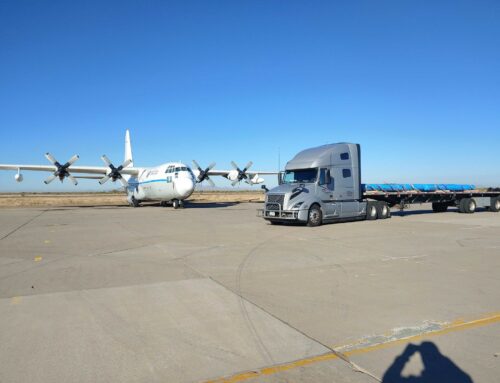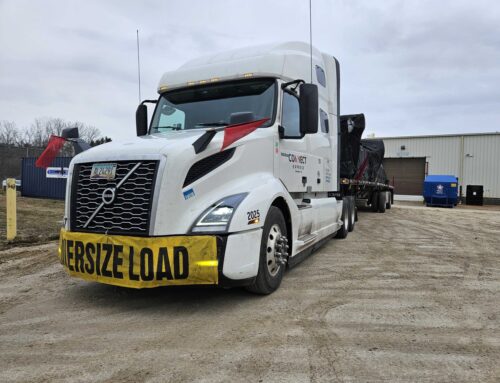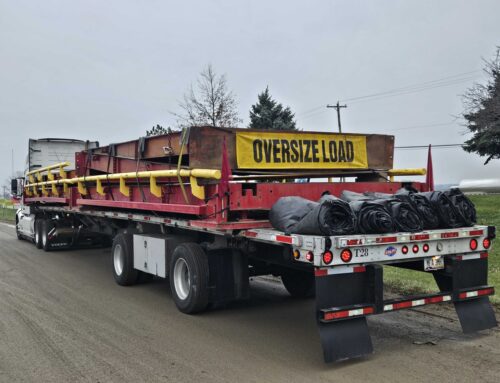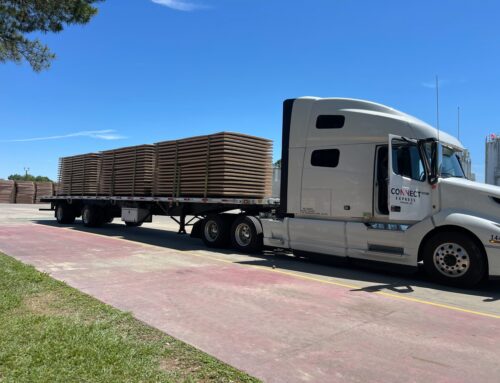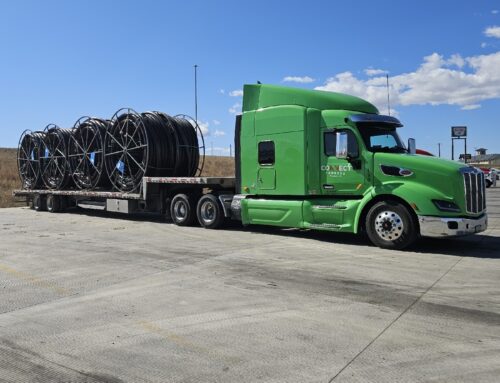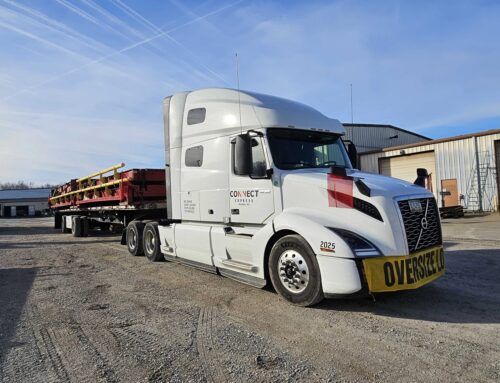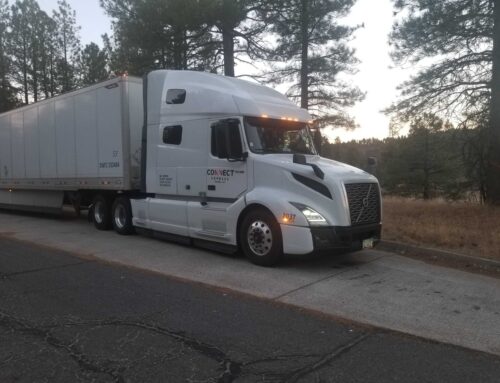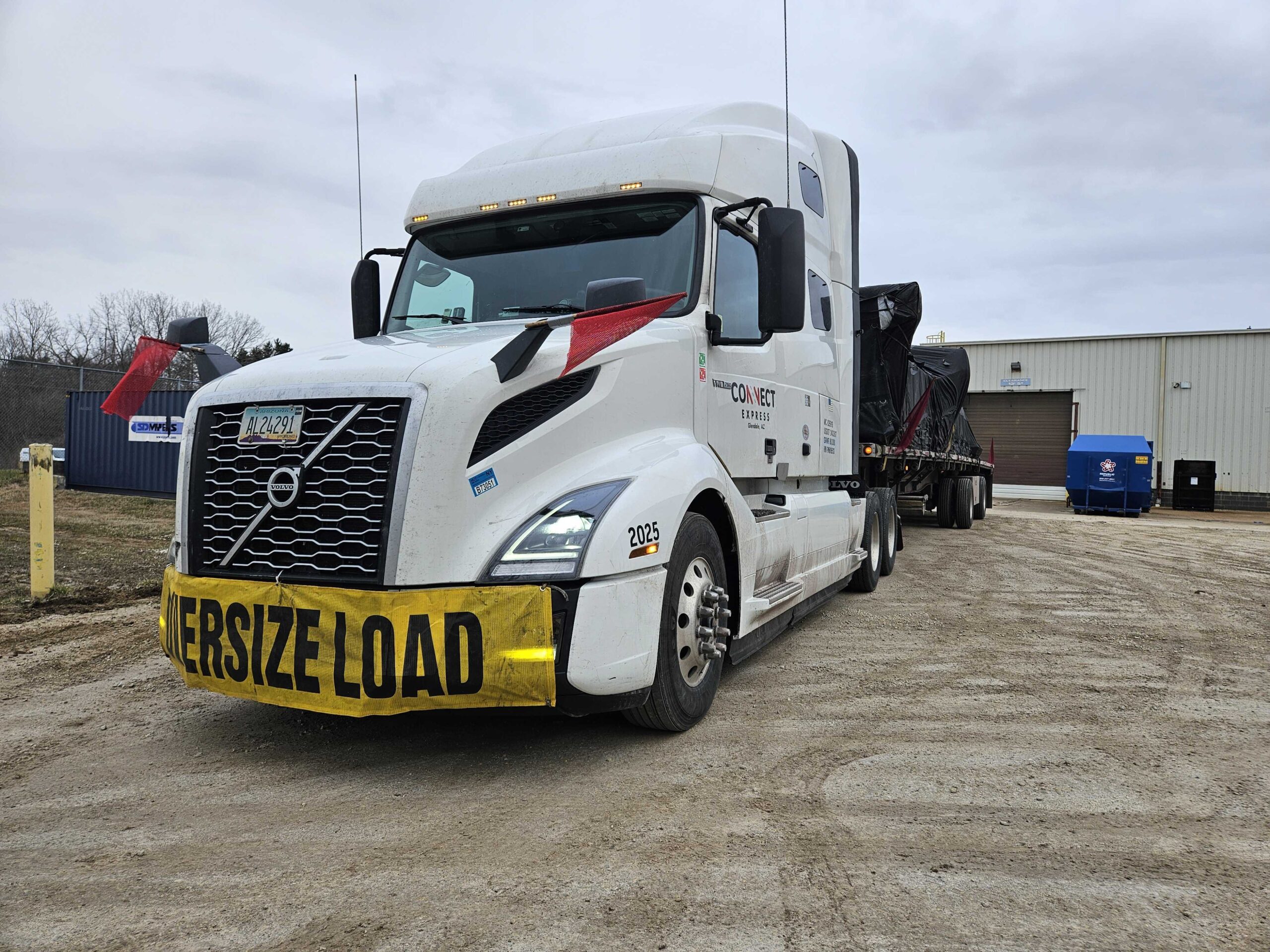
Navigating the intricacies of wide load permit regulations requires an attentive eye and a firm grasp of logistics nuances.
Before embarking on a haul that exceeds standard dimensions, familiarity with varying state mandates is not just beneficial, it’s absolutely crucial.
A misstep in permitting can lead to costly delays, fines, or, worse, a full halt in transit—potentially jeopardizing your reputation and bottom line.
Defining Wide Load
A “wide load” refers to a cargo that surpasses the standard legal width for a vehicle traveling on public roadways. Most frequently, a load is deemed wide if it extends beyond the width of 8.5 feet, which is the baseline across the majority of states for normal load dimensions. When a load surmounts this predefined width, it necessitates additional considerations for safe and legal transportation.
The ramifications of categorizing a load as “wide” go beyond mere measurements. It triggers an obligatory compliance with specialized permits, each tailored to the specific requirements of the states the load will traverse. These parameters dictate not only the need for permitting but also necessitate additional safety protocols such as escort vehicles, signage, and travel time restrictions. Therefore, correctly defining a wide load is pivotal in ensuring the logistical venture aligns with regulatory and safety standards.
Size Standards for Classification

The fundamental benchmark for a wide load is a width exceeding 8.5 feet. Beyond this measure, various state jurisdictions may impose additional dimensional restrictions that must be adhered to meticulously.
In recognizing a load’s width as surpassing 8.5 feet, the designation of “oversize load” is applied. This prompts regulatory compliance for transit over state lines, each harboring unique requirements for permitting and travel.
An oversize load can entail increased risk; hence, meticulous planning and compliance are essential for safe transit.
When dimensions cross statutory thresholds (typically 8.5 feet in width or 13.5 to 14.5 feet in height), the imperative for acquiring wide load permits emerges. These permits dictate the conditions and limitations of the oversize transport, including routing and necessary safety measures.
Variations by State
In the realm of flatbed trucking, the regulatory landscape for wide load permits is not uniform across all states. Each state possesses a unique set of criteria and guidelines governing wide load transports, necessitating a thorough understanding of these variations.
For instance, in the state of California, the maximum legal width is 8.5 feet, but for oversize loads, the state may require escort vehicles for dimensions that surpass a certain threshold. Conversely, in states like Texas, the criteria for escort vehicles and additional safety precautions may differ. This underscores the necessity for carriers to engage with state-specific regulations to ensure lawful and secure transportation.
Moreover, seasonal and daily travel restrictions can also play a pivotal role in planning a wide load movement. States like Minnesota impose spring thaw restrictions, affecting allowable weights and potentially the width of permitted loads during specific periods.
The complexity of navigating inter-state transport mandates both acute awareness of the regulations and the ability to adapt to the nuances of each jurisdiction. Ensuring a deep understanding of each state’s protocols can help prevent costly delays or violations. Seasoned professionals in flatbed trucking rely on this expertise to facilitate the successful and legal movement of wide loads throughout the intricate web of American highways.
Obtaining the Right Permit
When it comes to wide load transport, acquiring the appropriate permit is not merely a formality―it is an imperative legal requirement. Each state’s Department of Transportation (DOT) stipulates precise specifications for wide loads, including maximum dimensions and weight limits. Failure to procure a suitable permit can result in substantial penalties, road safety hazards, and disruptive enforcement stops. It is critical to secure accurate permits that reflect the load’s explicit measurements and the intended travel itinerary, ensuring compliance with all regulatory demands.
The process of obtaining a permit hinges on meticulous detail and preparation. Submit a comprehensive application to the relevant state’s DOT, encompassing details like load dimensions, vehicle type, and travel route. Be cognizant of the nuances between a “single trip” and a “blanket permit”―the former is tailored for a one-time move, while the latter covers a series of trips over an extended period. On securing the permit, it becomes essential to adhere strictly to the issued terms, which include specified routes and travel times. Non-compliance not only risks infractions but may also jeopardize the safety of bridge structures and roadways.
Application Essentials
When initiating the permit application process, the first crucial step involves determining the load’s exact dimensions. Beyond the width, length, height and weight are vital, forming the cornerstone of the necessary documentation and the subsequent permit stipulations.
Accurate vehicle identification must accompany dimension details. This encompasses the make, model, and axle count of the transport unit.
Furthermore, proposed travel routes require explicit delineation. This not only includes starting and ending points but also any logistical waypoints, bridges, or roadways with weight or height restrictions that may necessitate a specific travel itinerary.
Supplementary documents such as cargo descriptions and insurance certificates are prerequisites. These must outline not only the nature of the load but also verify financial responsibility in the event of cargo-related incidents or infractions.
Adherence to submission deadlines is critical in ensuring that permits are obtained in a timely manner. Late submission can lead to delays in transportation which could cause significant commercial repercussions or contractual breaches with clients expecting timely delivery.
Finally, it is vital to review each state’s unique permit requirements. Thorough understanding and compliance with these regulations ensure that transit proceeds without legal complications, safeguarding both the cargo and carrier interests.
Timelines and Validity
Permit timelines and validity periods are crucial components of wide load transportation.
- Issue Duration: Permits are typically issued for a specific timeframe, during which the transport must be completed.
- Single Use: Most wide load permits are single-use, meaning they are valid for one trip only.
- Extension Requests: If unforeseen circumstances arise, it is possible to request an extension, although approval is not guaranteed.
- Variable Validity: Some permits may have variable validity periods, based on the size and nature of the load or seasonal restrictions.
Wide load permits are not open-ended; they expire after the designated period elapses.
Navigating the precise validity of permits requires careful planning to avoid legal and operational setbacks.
Navigating Routes and Restrictions
Adherence to specific routing mandates is an integral component of wide load permit regulations. Predetermined pathways are designed to mitigate potential hazards and circumvent infrastructure limitations. Each wide load convoy is required to follow these designated routes precisely to maintain compliance and ensure the safety of all road users.
The process of mapping out a compliant pathway involves a detailed analysis of bridge capacities, road widths, and height clearances. In certain instances, a “pathfinder vehicle” may be necessary to go ahead of the convoy, ensuring the selected route accommodates the load’s dimensions. Moreover, transporters must remain vigilant of time-of-day travel restrictions that may affect the movement of oversized cargoes, adapting plans accordingly to align with local rules and regulations.
Pre-Approved Paths
Transporting a wide load demands adherence to specific routes.
Routing complexities for wide loads stem from numerous variables. Coordinating move permits with pre-approved paths reduces the likelihood of encountering unanticipated obstacles. These paths are scrutinized and certified by authorities, ensuring they can sustain the dimensions and weight of wide loads. Consequently, adherence to these routes is pivotal for regulatory compliance and preservation of infrastructure.
Pre-approved paths streamline the permitting process.
Custom routes can be designated for exceptional circumstances. However, pre-approved paths—vetted for wide load transit—are preferentially designated. They simplify the permitting process by offering a set of established corridors which are already confirmed for their suitability in terms of weight and dimension tolerances.
Securing permits can be less onerous with pre-approved pathways.
Wide load transporters can benefit greatly from utilizing these predetermined corridors, significantly reducing the complexity involved in traversing multiple jurisdictions. These pathways offer a clear-cut solution to compliance issues, integrating seamlessly with existing routing logistics, thereby optimizing operational efficiency and ensuring timely deliveries.
Escort and Safety Requirements
For wide load transports, safety is paramount, necessitating specific escort and precautionary measures.
- Pilot vehicles are often required to precede or follow a wide load, increasing visibility and alerting other road users.
- High-visibility markings including flags, lights, and banners are mandatory to enhance the wide load’s visibility.
- Communication equipment, such as CB radios, must be present in all escort vehicles to maintain constant communication.
- Traffic control measures, like temporary road closures or lane restrictions, may need to be coordinated with local authorities.
- Professional certification for escort drivers may be required, depending on the state and the size of the load.
The exact requirements vary by state and load specifics, demanding thorough research and adherence.
Failure to comply with these mandates can result in severe penalties, endangering public safety and company reputation.
Compliance and Penalties
Navigating wide load transport regulations with precision is crucial. Compliance with these guidelines is not negotiable; it’s a mandatory aspect of conducting a professional and lawful transportation operation. When breaches occur, the consequences are significant, ranging from hefty fines to legal actions. It is imperative to understand that penalties are not mere inconveniences but substantial fiscal burdens and detrimental to a carrier’s license and reputation. This stringent enforcement ensures thorough adherence to guidelines, reinforcing the overarching imperative of road safety and the protection of infrastructure from improperly secured or permitted wide loads.
Common Violations
Overlooking state-specific permit stipulations is a common infraction, leading to costly fines and operational delays.
Exceeding dimension limits without appropriate permits is a frequent oversight.
Failure to display required markings or flags on an oversized load is a recurrent issue that opens up the risk for non-compliance penalties and poses a threat to roadway safety.
Transporting wide loads without providing adequate escort vehicles where necessary can endanger other road users and lead to severe legal repercussions. Compliance with escort vehicle regulations is not just a formality; it is critical to maintaining the safety and integrity of highway transportation systems. Lack of adherence can result in both immediate operational setbacks and long-term consequences, such as a tarnished professional reputation and possible revocation of operating licenses.
Legal and Financial Consequences
Noncompliance with wide load regulations can result in significant financial penalties and legal repercussions for operators. These penalties escalate with the severity of the infraction and may include suspension of transport operating licenses.
Fines for permit violations can quickly compound, impacting a company’s bottom line. Repeat offenses may lead to higher penalties or even criminal charges, solidifying the necessity for strict adherence to regulations.
When a transport company fails to secure the proper permits or adhere to wide load regulations, they risk not only immediate financial loss but also long-standing damage to their business reputation. Ongoing violations can prompt a thorough audit of operations, potentially uncovering further noncompliance issues.
Moreover, litigations arising from accidents related to improper wide load transport can be financially devastating. The costs extend beyond fines — they involve legal fees, increased insurance premiums, and the potential for civil liabilities. It is, therefore, imperative to view compliance with wide load regulations not as a mere formality but as a fundamental aspect of operational risk management.




